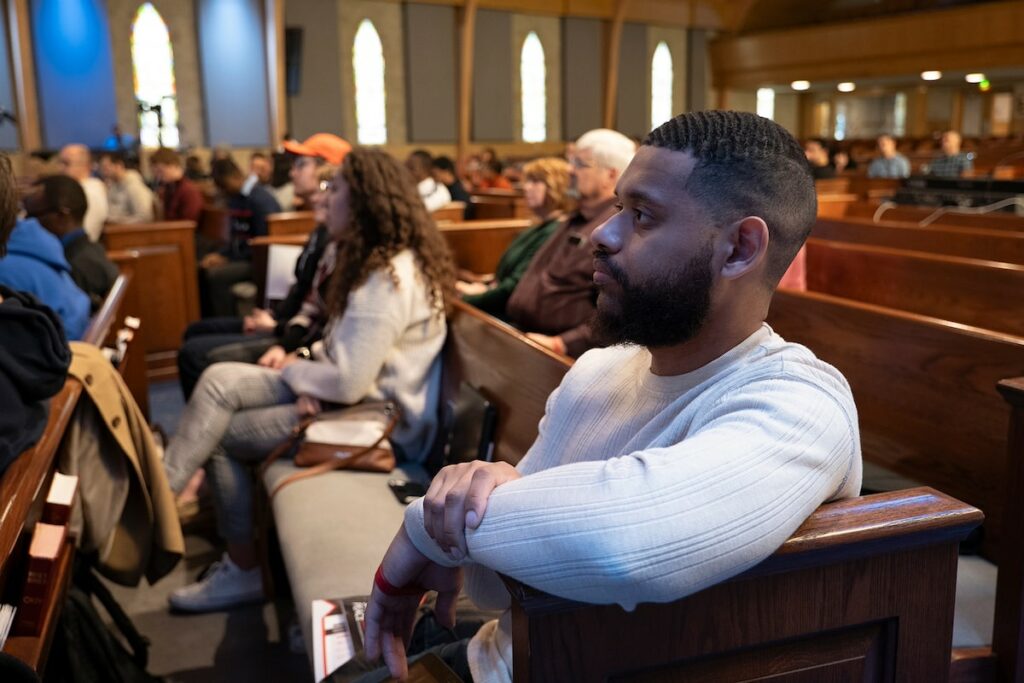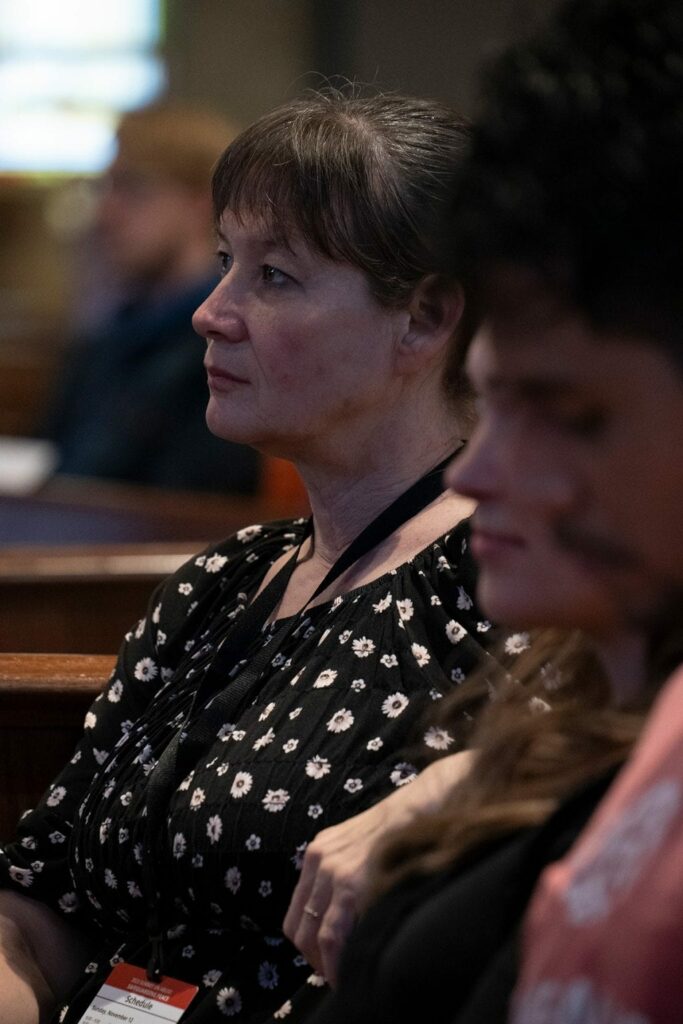Tackling Abuse One Advocate at a Time
North American Division holds “Safeguarding Peace” 2023 enditnow Summit.
December 14, 2023 | Michigan, United States | Christelle Agboka, North American Division, and Adventist Review
Karen did not fit the stereotype of an abuse survivor. She was raised in a loving Seventh-day Adventist home with no history of abuse on either side. When she met her husband at an Adventist university, she never imagined she would become one of the 10 million Americans affected by domestic violence each year.
The mistreatment began with excessive criticism and intensified after the birth of their first child, a girl with Down syndrome, whom her husband pressured her into putting up for adoption. As their family expanded to include two boys, he subjected her to such horrific emotional, physical, and sexual abuse that she wanted to take her own life.

“Faith communities can be a powerful part of the solution [to abuse issues],” said Mike Sloan, director of safeguarding at GRACE, during the North American Division’s 2023 enditnow Summit on Abuse. [Photo: Dan Weber]
The North American Division (NAD) enditnow Summit on Abuse, themed “Safeguarding Peace,” held November 12-13 at Andrews University in Berrien Springs, Michigan, United States, featured Karen’s video testimony and follow-up discussions, along with thought-provoking devotionals and presentations from advocates, church leaders, and educators. It ended with hands-on training for responding appropriately to abuse disclosures and creating a resource list for abuse survivors.
More than 100 church leaders, educators, seminary students, professional advocates, and volunteers from across North America and Europe registered for the summit. The two-day event concluded with an enditnow certification ceremony for attendees who demonstrated the ability to support abuse survivors through a skills assessment.
“The Seventh-day Adventist Church in North America cares deeply about the topic, and we’re taking a firm stand against it,” Erica Jones Smith, summit organizer and NAD Women’s Ministries assistant director, said. She added, “We believe one of the most impactful things we can do is train local people to understand this does happen in faith communities and to know how to appropriately respond when it does.”

Some of the attendees to the enditnow summit who came from across North America and Europe. [Photo: Dan Weber]
Also on opening day, participants learned that a counselor, Nicole Parker, was available for support throughout the training. Parker, who teaches a course on biblical counseling and conflict resolution at Southern Adventist University and serves as an abuse advocate and therapist, emphasized the church’s need to tackle abuse issues. “Many people think advocacy against abuse is a side issue that distracts us from taking the gospel to the world. But I find it’s a central issue. Jesus said that how we treat the powerless is an index of where our hearts are.”
Three of the presenters, René Drumm, senior research professor of sociology at Andrews University; Tricia Lewis, clinical assistant professor of health sciences at Sacred Heart University; and Tracey Ray, executive director of Safe Haven of Pender, a shelter and resource center for domestic abuse survivors, also helped develop the Safeguarding Peace manual with information on abuse, resources, and appropriate responses to disclosure. It was introduced at the summit and will be made available at AdventSource.

The Summit on Abuse kept attendees’ attention with inspiring sessions on abuse statistics, prevention, and response, as well as hands-on training on how to respond. [Photo: Dan Weber]
Lewis spoke on the prevalence of abuse, sharing that in the U.S., one-third of women and men report emotional or psychological intimate partner violence (IPV). In Canada, 44 percent of women and 36 percent of men experience IPV, emotional violence being most prevalent at 40 percent for both, and physical IPV coming in second, at 23 percent of women and 17 percent of men.
The most eye-opening revelation was the prevalence of IPV in the Seventh-day Adventist Church in North America, based on surveys submitted by 1,400 members. More than 60 percent of the sample had experienced some form of emotional or psychological abuse. Also, 30 percent of women and 20 percent of men reported physical violence.
Lewis stated, “The numbers indicate that intimate partner violence is just as common in the church as it is outside of the church in North America. This may be shocking for many who think the denomination or church is a sacred place for men and women. Unfortunately, we’re not doing any better, as far as preventing abuse, [than] the rest of the world.”

Attendees who passed a skills assessment were certified as enditnow advocates. [Photo: Dan Weber]
In a session on barriers preventing victim-survivors from leaving, Ruben Muriente, program manager, Office of Community, Safety, and Gun Violence for the City of Chattanooga, Tennessee, noted that for many, “The fear of leaving is greater than the fear of staying.” Reasons for staying include fear of greater physical harm, losing custody of their children, not being believed, feelings of guilt and shame, or hope for positive change. Lewis added that women often stay, even in cases of severe abuse, because of financial dependence on the other person. Attendees also learned that, on average, victim-survivors leave six to eight times before leaving permanently.
Muriente underscored that issues are endemic in churches. First is the abuser’s reputation. “Those wolves in sheep’s clothing are much more common than you think,” he said. In Karen’s case, her husband was a deacon and friend of the pastor. He added, “Sometimes our religious expectations need to be checked when it comes to abuse.” The misconception that abuse is less prevalent within the church and the lack of intentionality around these issues can inadvertently perpetuate a culture of abuse.

Nicole Parker, an adjunct professor at Southern Adventist University and an abuse advocate and therapist, was available throughout the enditnow summit to support participants who might experience triggers from any of the content. [Photo: Dan Weber]
Subsequently, Lewis shared different tiers of prevention. Tertiary prevention mitigates the long-term consequences of violence for victim-survivors seeking healing. Examples in the church include counseling (referral as needed), support groups, and financial and in-kind support for victim-survivors and families. Secondary prevention encompasses early detection and immediate intervention. Examples include making IPV resources available and having an enditnow advocate receive confidential disclosures. Finally, primary prevention involves system-wide efforts to prevent new cases of a condition or victimization. Examples include sermons condemning abuse, enditnow emphasis day, and seminars on healthy relationships.
Mike Sloan, director of safeguarding at GRACE (Godly Response to Abuse in the Christian Environment), covered child abuse prevention and response on both days. He cited common instances of child abuse as physical discipline leading to physical injuries and emotional neglect when a child does not feel safe or loved. He noted that more than 90 percent of victims know their abuser, and most abuse occurs in the home by a biological or non-biological parent or partner. Finally, many child abuse victims never disclose their abuse.
While religious affiliation does not automatically reduce child abuse issues, Sloan asserted, “faith communities can be a powerful part of the solution.” He called for the education of kids on protecting themselves and the education of congregations on types of child abuse, red flags, boundaries, and resources. “The safest community is an educated community,” he said.
Sharing Hope and Healing
Karen’s story was interspersed throughout the summit and offered hope for victim-survivors and advocates alike. She tells that she was about to drive into a sinkhole when the song “Choose Life that You Might Live” began playing on the radio, growing gradually louder. She cried out to God for help that day, which came in the form of a friend who observed her rubbing her wrist and urged her to seek counseling. Shortly afterward, Karen saw a flyer for a women’s abuse shelter at church. She asked her husband to let her attend depression treatment, and miraculously, he agreed. The peace she experienced there, and much prayer, gave her the strength to leave him.
Today, Karen and her adult sons are thriving; her sons are married and pursuing purposeful careers. She even reconnected with the daughter she gave away for adoption. Today, she shares her story openly. “Why did God allow this to happen? I have no clue,” she said. “But I do know God is good. I give God the glory for bringing me through it. I want to tell other women that there is hope.”
The original version of this story was posted on the North American Division news site.